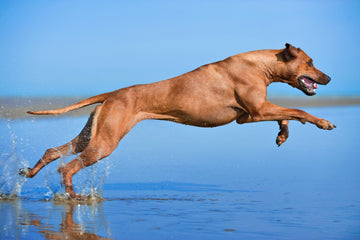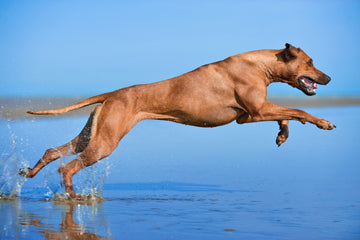Subtle Signs of Joint Pain and Natural Ways to Help
In dogs, joint pain sometimes lurks silently. One day, your dog might be jumping into the car or chasing a ball across the yard, and the next day, it may hesitate to leap or appear slower on walks. Many dog owners find it simple to overlook or confuse early joint problems for aging. Early identification of the symptoms, however, can greatly affect the comfort, mobility, and general quality of life of your dog.
Here are the subtle indicators to look for if you're wondering whether your dog might be suffering in silence—and natural strategies to help their joint health before it gets worse.
1. Minor Behavioral Adjustments
Dogs talk by behavior since they cannot tell humans they are in agony. Your dog may avoid stairs, show less enthusiasm for walks, or take more time to get up from a lie-down. Certain dogs could grow agitated or stop playing. Often early signs of joint pain or inflammation are these small changes in behavior.
2. Stiffness—Especially in the Morning
Dogs with joint problems frequently feel the worst after repose, much like individuals with arthritis would. Your dog may have inflammation or less joint lubrication if it looks stiff when initially awake but gets better during the day. Such behavior is a classic indicator of either cartilage disintegration or arthritis.
3. Slower Motions and Less Endurance
Has your dog lately started trailing on walks? Do they avoid play totally or rest more often? Classic symptoms of joint pain are diminished stamina and reluctance to move. Though many pet owners believe such discomfort is inevitable with aging, it is not so.
4. Chewed or Licked at Joints
To self-soothe, dogs sometimes lick or chew at hurting places. Your dog could be suffering with joints if they are concentrating on their hips, knees, or elbows. Occasionally you may also find discomfort or edema around those joints.
5. Hind Leg Muscular Loss
Often resulting from decreased exercise, joint pain can lead to muscle atrophy—particularly in the hind legs. Your dog may be avoiding placing weight on uncomfortable joints if its back legs are beginning to seem smaller or weaker.
What You Are Naturally Capable of
If you have observed any of these indicators, calm yourself. Natural preventive measures can reduce your dog's discomfort and even slow the progression of joint issues.
Including a premium joint supplement in your dog's regimen is among the most successful natural approaches available. Search for recipes with ingredients like
● Glucosamine and Chondroitin – These help cushion joints and support cartilage repair.
● Hyaluronic Acid – Increases flexibility and lubrication of joints.
● Collagen – Helps the connective tissues maintain joints together.
● Serrapeptase – A natural anti-inflammatory enzyme that can help ease discomfort without strong adverse effects.
Leading joint supplement Forte Flex K9 aggregates these potent components into one veterinarian-recommended recipe. Designed for dogs of many ages and sizes, it naturally and powerfully helps to lower inflammation, promote cartilage health, and increase mobility.
The Key is Prevention
Preventative joint care is among the best decisions you can make, even if your dog isn't displaying obvious pain right now. Especially prone to joint wear and tear are active dogs, big breeds, and the elderly. Beginning a joint health program now will enable them to remain active and pain-free for many years to come.
Your dog is entitled to run joyfully, roam freely, and live painlessly. You give them comfort and longevity by spotting the silent indicators and responding early with a natural joint health plan, one step at a time.






